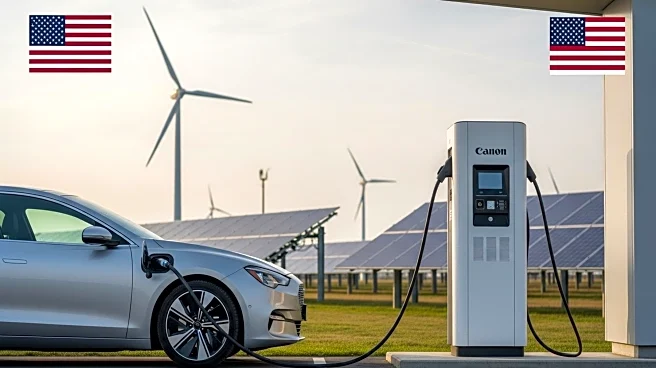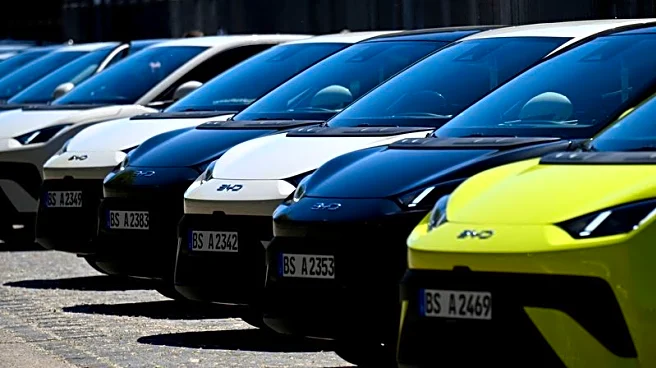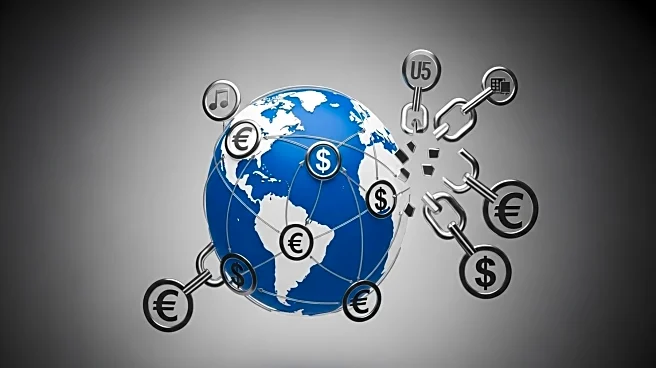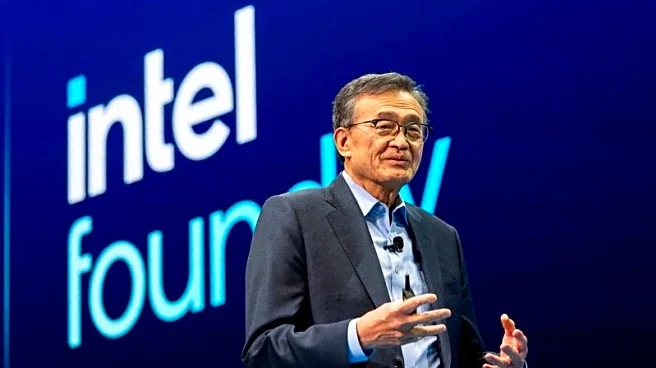What's Happening?
The U.S.-EU trade deal, finalized in August 2025, has significantly altered transatlantic economic relations, particularly impacting the European auto industry and U.S. energy sectors. The agreement reduces U.S. tariffs on EU automotive imports from 27.5% to 15% and eliminates EU tariffs on U.S. industrial goods. This change provides immediate cost savings and strategic opportunities for European automakers like BMW, Mercedes-Benz, and Volkswagen, allowing them to adjust production strategies and supply chains. BMW has already leveraged its U.S. Spartanburg plant to produce 400,000 vehicles annually, benefiting from tariff exemptions. Volkswagen, facing a profit decline due to tariffs, plans to open a new factory in South Carolina by 2026. The U.S. energy sector stands to gain from the EU's commitment to procure $750 billion in U.S. energy exports by 2028, benefiting companies like ExxonMobil and Chevron.
Why It's Important?
The trade deal is crucial as it opens up substantial economic opportunities for both regions. For the European auto industry, reduced tariffs mean significant cost savings, estimated at up to €500 million monthly, and a chance to stabilize supply chains. This could lead to increased competitiveness and market share in the U.S. For the U.S. energy sector, the EU's procurement commitment aligns with its energy security and decarbonization goals, providing a long-term demand boost. The deal also includes a $600 billion EU investment in U.S. strategic sectors, enhancing opportunities in clean energy technologies and critical mineral supply chains. These developments could lead to increased infrastructure and market expansion for U.S. energy firms.
What's Next?
European automakers need to accelerate U.S. production shifts to fully benefit from tariff reductions before potential renegotiations or regulatory changes. U.S. energy firms have until 2028 to secure infrastructure projects to meet EU procurement targets. Delays could erode competitive advantages, especially amid geopolitical tensions and regulatory hurdles. The deal's conditional nature, requiring EU legislation to fully remove tariffs on U.S. industrial goods, introduces uncertainty. Automakers must consider labor costs, regulatory alignment, and supply chain reconfiguration to ensure the long-term viability of U.S. production hubs.
Beyond the Headlines
The trade deal's broader implications include potential resistance from the EU regarding U.S. agricultural exports and unresolved regulatory gaps in digital services, which could delay further trade liberalization. The agreement's success depends on legislative actions and the ability of industries to adapt to new trade dynamics. The deal represents a strategic inflection point, requiring firms to optimize their positioning and execution to capitalize on the opportunities presented.













